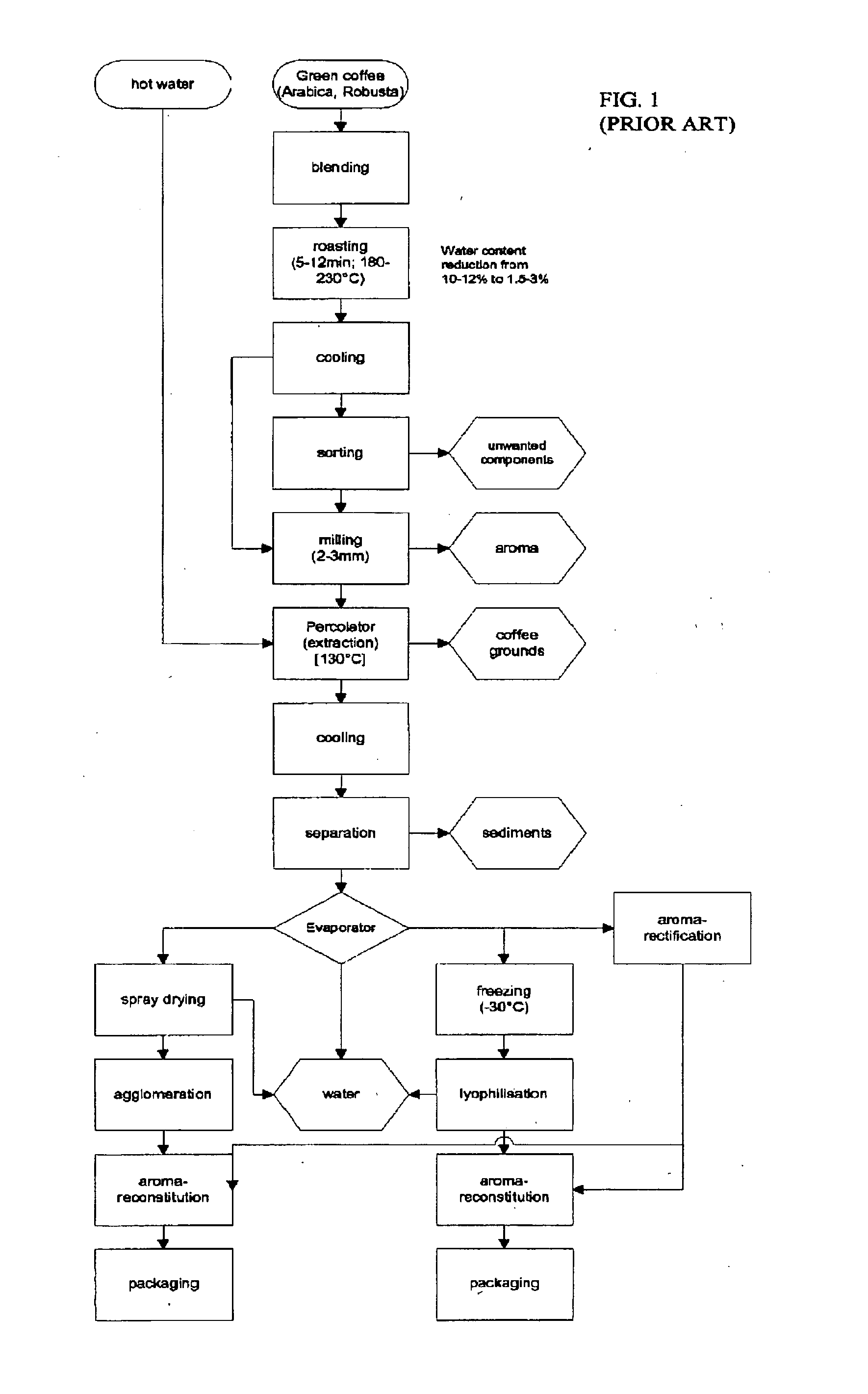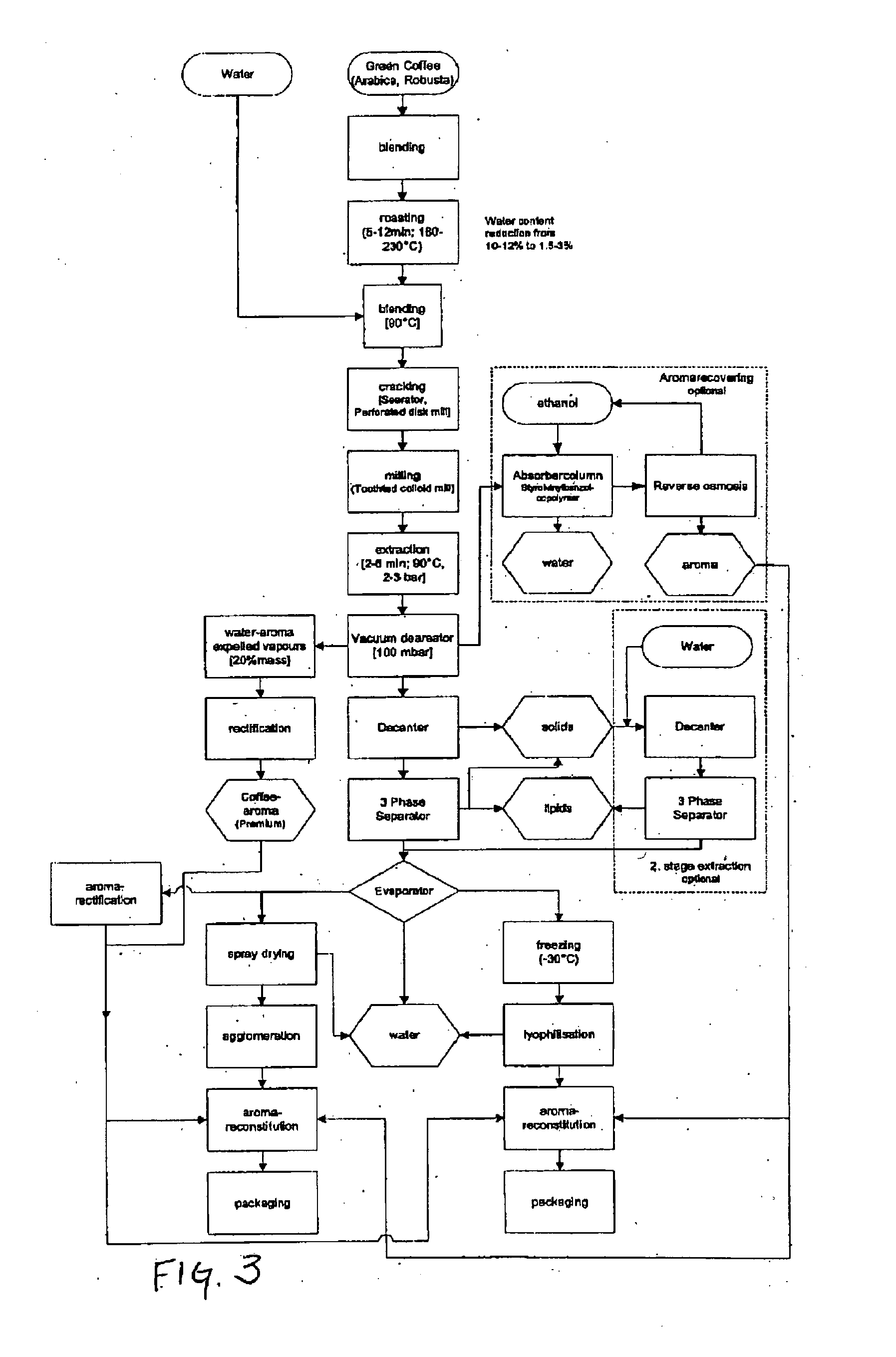Coffee process
a coffee bean and coffee technology, applied in the field of coffee bean processing methods and/or processes, can solve the problems of deficient modern extraction methods or techniques in various respects, loss or waste of certain commercially useful and/or valuable coffee by-products, and often loss or waste of aromatization and/or bioactive products or particles, etc., to reduce the risk of typically undesirable rancid flavor
- Summary
- Abstract
- Description
- Claims
- Application Information
AI Technical Summary
Benefits of technology
Problems solved by technology
Method used
Image
Examples
example 1
[0073]Referring initially to FIG. 2, an exemplar embodiment of a technique for processing coffee beans is illustrated therein (i.e., as a flow chart illustrating the various steps in one example inventive method of processing coffee beans). As illustrated in FIG. 2, the subject coffee processing technique generally begins with the selection and blending of whole coffee beans to obtain desired flavor characteristics (based upon selecting beans according to regional taste characteristics of coffee beans, for example). After the beans are initially selected and blended, the beans are roasted for between 5-12 minutes at a temperature of between approximately 180-230 degrees C. In particular, this reduces the water content of the beans to levels desirable and / or acceptable for further processing (e.g., from approximately 10-12% water content to approximately 1.5-3% water content). Afterwards, the beans may be optionally blended again with the addition of water and heat at approximately 9...
example 2
[0081]Turning now to FIGS. 3 through 6, a second example (non-limiting) embodiment of a technique for processing coffee beans is illustrated therein. As illustrated in these figures, in the first steps of this example embodiment, coffee bean blending, roasting and cracking steps are performed. Certain example steps in such a process are set forth as follows:[0082]Blending: Coffee bean types (e.g., beans selected from different varieties or from different origins) or combinations thereof are selected and mixed.[0083]Roasting: In a roasting step, blended beans are heated for approximately 5-12 minutes at between 180 and 230 degrees Celsius. In this roasting step, roast aroma is formed.[0084]Blending: In a second blending step (optionally performed at approximately 90 degrees Celsius), the beans are mixed with water and appropriate temperature (e.g., heat) is applied in preparation for the milling and extraction procedure. In certain (but not all) embodiments of the invention, this is ...
PUM
 Login to View More
Login to View More Abstract
Description
Claims
Application Information
 Login to View More
Login to View More - R&D
- Intellectual Property
- Life Sciences
- Materials
- Tech Scout
- Unparalleled Data Quality
- Higher Quality Content
- 60% Fewer Hallucinations
Browse by: Latest US Patents, China's latest patents, Technical Efficacy Thesaurus, Application Domain, Technology Topic, Popular Technical Reports.
© 2025 PatSnap. All rights reserved.Legal|Privacy policy|Modern Slavery Act Transparency Statement|Sitemap|About US| Contact US: help@patsnap.com



